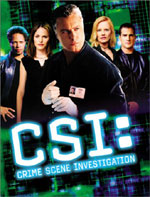 Now it’s hip to be a ‘CSI’ case buster
Now it’s hip to be a ‘CSI’ case buster
by Christie Wilson
The popularity of top-rated “CSI” and other TV shows and books about case-busting forensic scientists is attracting a growing number of students to the field.
Officials at the University of Hawai’i and Chaminade University took steps last week to expand their programs in forensic science, with UH-West O’ahu to offer a certificate in applied forensic anthropology and Chaminade adding a master’s degree.
Internationally known forensic scientist M. Lee Goff, who heads the forensic science program at Chaminade, is an adviser to the “CSI” show. He agrees popular culture has boosted interest in crime scene investigation.
“It has called attention to the fact that this field exists to a lot of good students who were looking at something else,” Goff said.
Chaminade has 160 students participating in forensic science studies, up from 20 in the fall of 2001…
At UH-West O’ahu, enrollment in a forensic anthropology class has grown from 22 students in the fall of 1999 to 41 last year, exceeding class capacity. The class is taught by Thomas Holland, scientific director of the Central Identification Laboratory, part of the Joint POW/MIA Accounting Command at Hickam Air Force Base. The lab’s main mission is to identify human remains from past wars.
“There exists a large gap between the steadily increasing job opportunities in the field and the educational infrastructure to train the applicants,” said Holland, expressing support for the certificate program in a letter to UH officials.
Bob Mann, a lab colleague of Holland’s, teaches forensic anthropology at Chaminade and worked on the case of serial killer Jeffrey Dahmer while employed by the Smithsonian Institution in Washington, D.C.
Forensic anthropologists, sometimes known as “bone detectives,” use scientific techniques to identify skeletal remains, badly decomposed corpses and other human remains, often assisting law enforcement agencies in determining the cause of death.
Mann said that before the current crop of TV shows focused attention on forensic science, the O.J. Simpson murder trial “kicked interest into gear” by reinforcing the notion that crime scene evidence not eyewitness testimony is what makes or breaks a case.
Another attraction, Mann said, are the advances in forensic science technology from the days of the old TV show “Quincy,” which starred Jack Klugman as a crime-fighting coroner, to the razzle-dazzle of “CSI.”
“Now with the TV shows, people see really cool stuff,” he said.
A fascination with the technology is one reason Nicole Stalter, 22, got her bachelor’s degree in forensic science this year from Chaminade. Stalter said she plans to enroll in the new graduate program approved Friday by the college’s board of regents.
She originally was studying pre-medicine but decided to combine the fields of science and criminal justice with a degree in forensic science. Stalter said she is not put off by the idea of working with the dead. “Getting down and dirty doesn’t bother me when the end result is helping to solve a crime and maybe saving somebody’s life,” she said.
The job market looks solid for crime scene technicians and forensic scientists, with thousands of openings expected nationwide. Goff said that in a recent recruiting visit by the Las Vegas police department, graduates with no work experience were offered $50,000 starting salaries.
Joseph Mobley, interim vice chancellor for academic affairs at UH-West O’ahu, said he expects the certificate program at his school to appeal to people already employed by federal, state and county law enforcement agencies and the military. Potential employers of certificate holders include those agencies as well as contract archaeology firms, the State Historic Preservation Division and Bishop Museum.
To accommodate working students, courses will be offered in the late afternoons, evenings and on weekends.
The UH board of regents at its meeting Thursday on Maui approved the new certificate program in applied forensic anthropology, which will be run in partnership with Leeward Community College. The program, which starts next semester, will provide a more substantial background in forensic anthropology to prepare students for jobs in the field or graduate studies elsewhere.
The curriculum will comprise 12 units in anthropology and biology at the community college, along with 18 credits in anthropology, social science and justice administration at UH-West O’ahu.
(In accordance with Title 17 U.S.C. Section 107, this material is distributed without profit to those who have expressed a prior interest in receiving the included information for research and educational purposes. VT has no affiliation whatsoever with the originator of this article nor is VT endorsed or sponsored by the originator.)
ATTENTION READERS
We See The World From All Sides and Want YOU To Be Fully InformedIn fact, intentional disinformation is a disgraceful scourge in media today. So to assuage any possible errant incorrect information posted herein, we strongly encourage you to seek corroboration from other non-VT sources before forming an educated opinion.
About VT - Policies & Disclosures - Comment Policy



